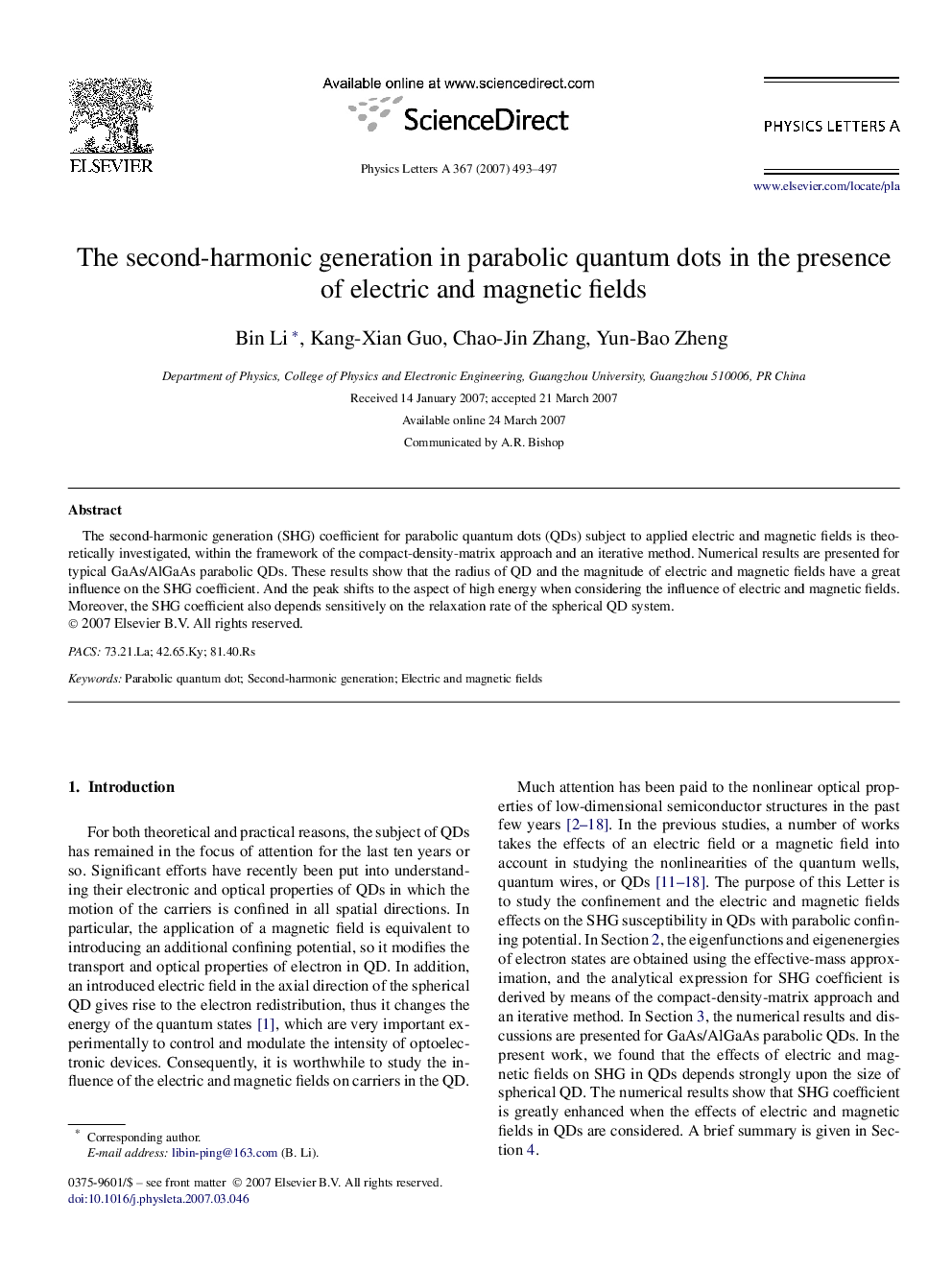| Article ID | Journal | Published Year | Pages | File Type |
|---|---|---|---|---|
| 1863524 | Physics Letters A | 2007 | 5 Pages |
Abstract
The second-harmonic generation (SHG) coefficient for parabolic quantum dots (QDs) subject to applied electric and magnetic fields is theoretically investigated, within the framework of the compact-density-matrix approach and an iterative method. Numerical results are presented for typical GaAs/AlGaAs parabolic QDs. These results show that the radius of QD and the magnitude of electric and magnetic fields have a great influence on the SHG coefficient. And the peak shifts to the aspect of high energy when considering the influence of electric and magnetic fields. Moreover, the SHG coefficient also depends sensitively on the relaxation rate of the spherical QD system.
Related Topics
Physical Sciences and Engineering
Physics and Astronomy
Physics and Astronomy (General)
Authors
Bin Li, Kang-Xian Guo, Chao-Jin Zhang, Yun-Bao Zheng,
